-
According to data of the industry, the issue of digital news subscribers increased 94% over the previous year, reaching 775,000 subscriptions in Spain.
-
Half of the subscribers (48.9%) reported paying for two or more digital news subscriptions and almost 25% (24.8%) for three or more.
-
Readers more interested in news are embracing the freemium model after decades of free.
The data on status on paying for news in Spain shows several apparently contradictory trends. It is not surprising that, for yet another year, the majority of those surveyed (66.8%) declare that they pay nothing for information, neither printed nor digital. It was also predictable that, after the confinement, payments for printed newspapers would recover slightly, but without reaching pre-pandemic levels (27.2% bought a newspaper the week prior to the survey). However, a significant increase was expected in the issue of Spaniards who paid for digital information in the last year (2021, as the survey takes place at the end of January 2022), in line with the new strategies of charging for digital news implemented in 2019 and 2020 by the main news companies in the country. The data reflect that, although the total issue of people who paid for digital news is identical to last year (11.7%), there has been an extraordinary increase in the most promoted (and profitable) payment modality by the newspaper industry: subscriptions. Also, half of those paying for news are subscribing to two or more news services (49%).
Small changes in the global map of payment for information
After a 2021 in which Spain's main media companies had to cope with confinement measures and difficulties in the distribution of printed newspapers, this year's data reflect a slight recovery in the issue of people reporting having purchased a newspaper in the week prior to the survey (27%). However, the figures are still far from the pre-pandemic level (37% in 2019) and reflect the gradual decline of the print newspaper market.
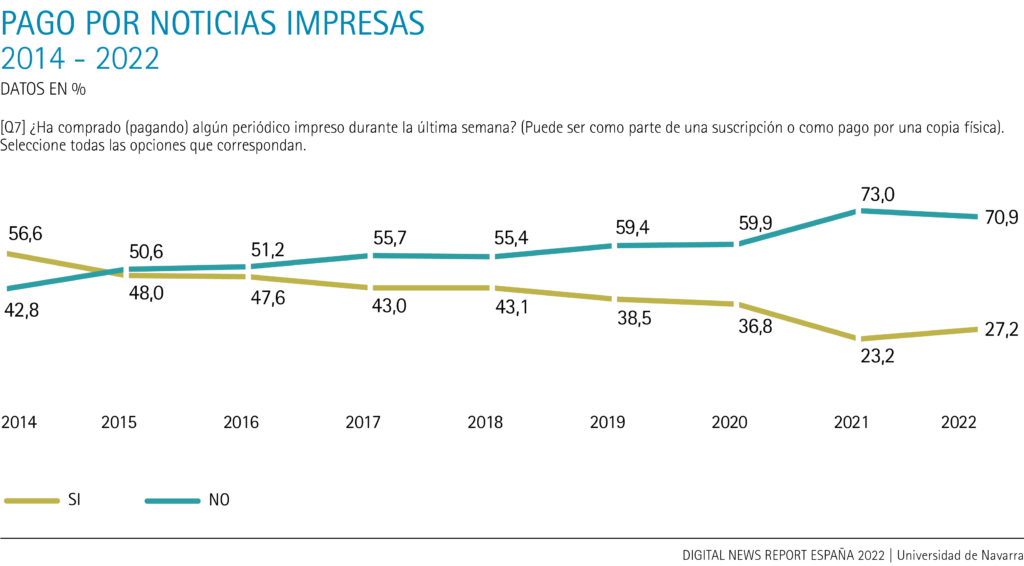
Meanwhile, and apparently, there has been little change in the overall payment for digital news: the majority of the population is reluctant to pay and only 11.7% of respondents paid in the last year for this service.
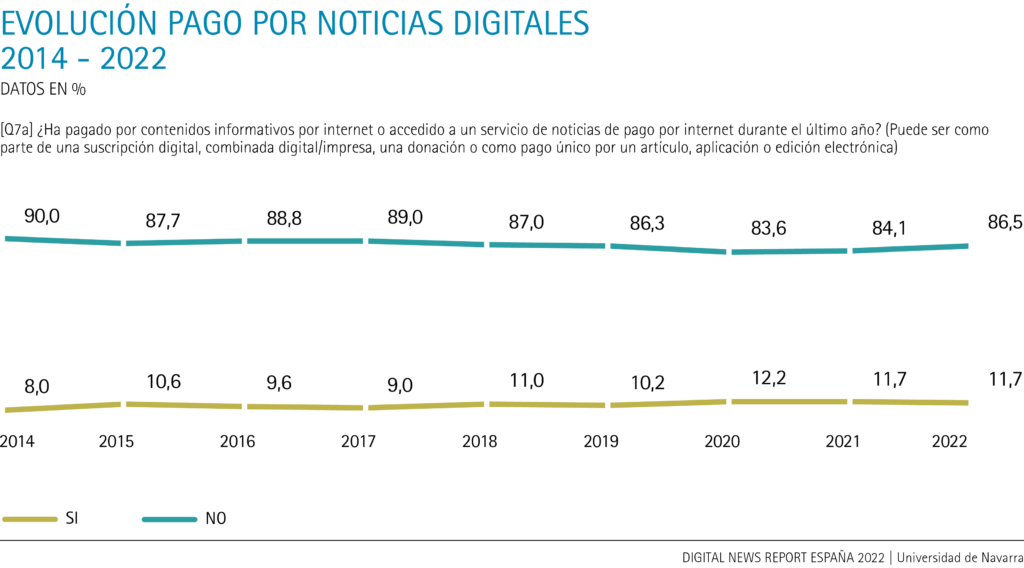
These two general trends have led to slight changes in the overall map of payment for news in Spain. As can be seen in the following graph, the largest group is made up of those who paid nothing for being informed, neither print nor digital products (67% of the total). This is followed by the group of respondents who only paid for printed news (19%, three points more than in 2021). Finally, the issue of dual users, who paid for both products, grew slightly (8%) and those who paid only for digital news decreased (4%).
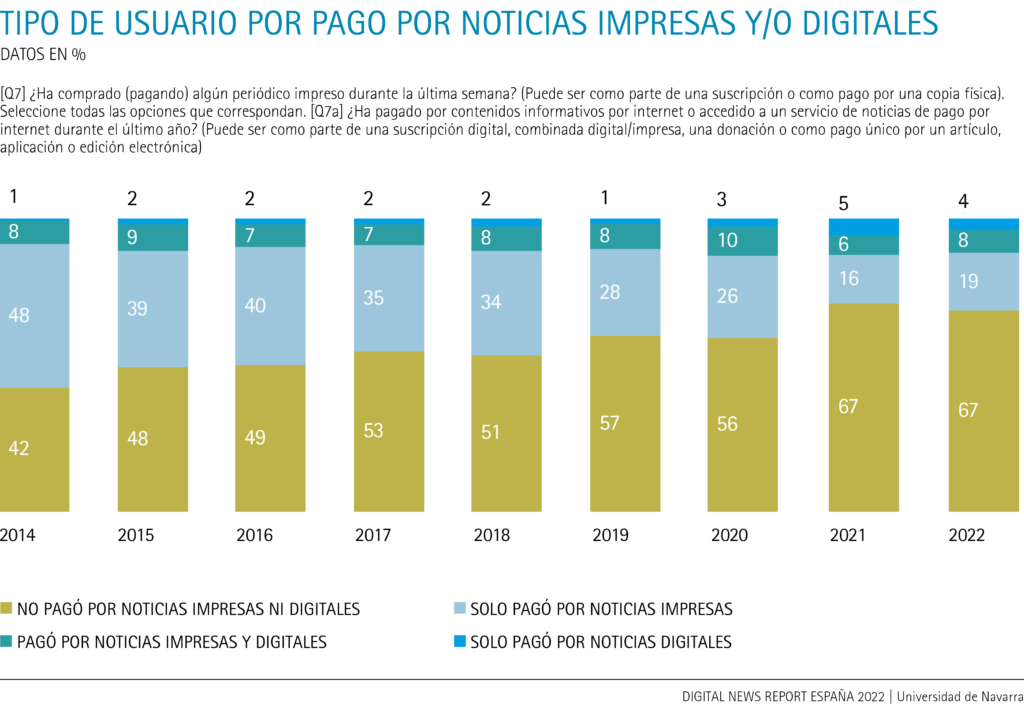
In all of the 40 countries asked about paying for digital news, 16% of users said they had paid for a news service in the past year, compared to 79% who did not. Spain is thus below the average and within the ten countries with the lowest percentage of payment. Once again this year, the Nordic countries and Hong Kong lead the ranking of payment for news.
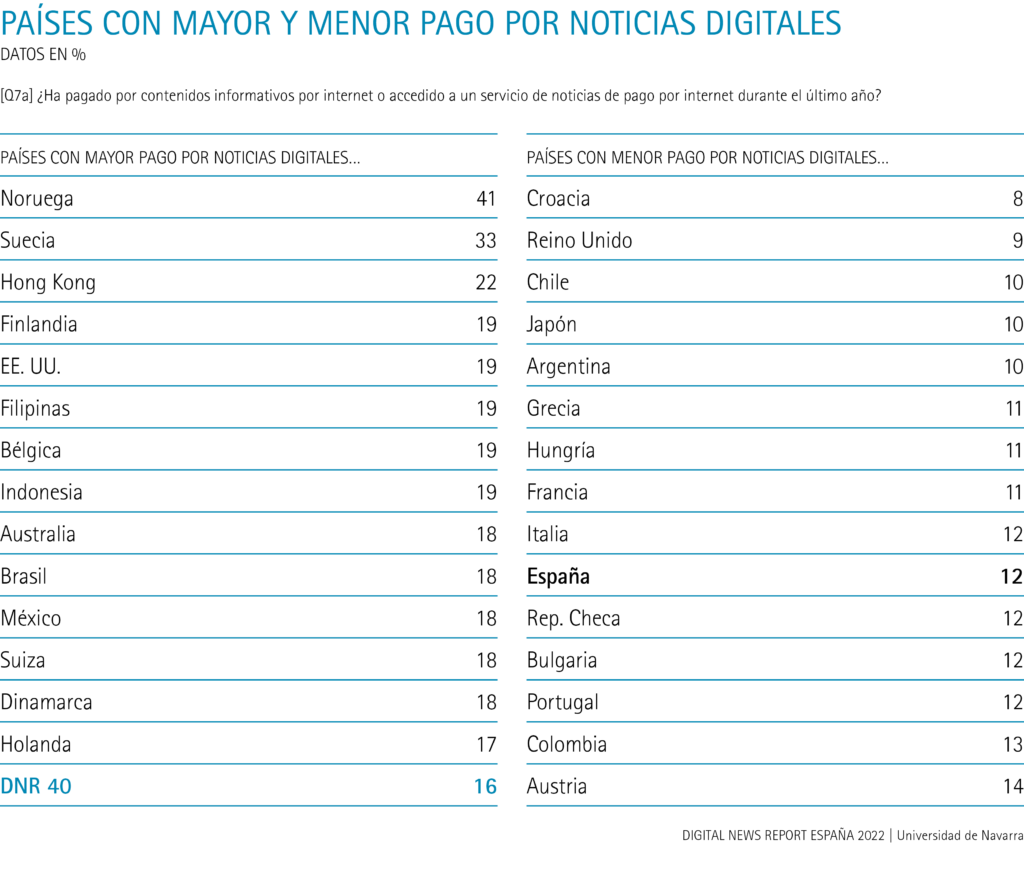
Rapid transition from free to subscription model
A more in-depth study of data on payment allows us to affirm that the subscription model is consolidating and that Spanish publishers are beginning to reap the rewards of the change in their digital revenue strategy. The free era is behind for the main news groups, which since 2019 have opted for the freemium strategy, in which the most exclusive differentiated contents are paid. Thus, from agreement with the data declared by the industry itself collected by the authors of this report (May 2022), the Spanish market has more than 775,000 subscribers, 94% more than a year ago. The main leaders are El País (204,295, of which 164,200 are exclusively digital subscribers), El Mundo (90,000), La Vanguardia (67,000), Ara (41,200), Expansión (40,000), ABC (27,000, and the entire group Vocento, 103,000), La Voz de Galicia (20,000), and El Correo (18,000). Among the digital natives, ElDiario.es (62,000), El Confidencial (35,000), El Español (25,000), Vilaweb (14,000) and Infolibre (13,000) have the highest number of subscribers or members.
How is it possible that there has been this explosion in subscriptions and yet the total percentage of Spaniards who say they pay for digital news remains stable at around 12%? The explanation lies in the changes in the modality of payment chosen by the respondents.
As can be seen in the following graph, in the last three years there has been an increase in the modalities of payment for subscriptions, either the standard (regular payment as a subscriber or partner to a news product) or the joint subscription (payment for a package of print and digital media). In the first case, more than 42% of those who paid for digital news opted for this modality (eleven percentage points more than in 2020) and another 31% chose the joint subscription (eight percentage points more than two years ago). The remaining modalities such as gift subscriptions (15%) or payment per unit or issue (18%) have hardly changed compared to 2020, although the percentage of respondents who opted for donation has almost halved (16% in 2020 to 9% in 2022) and free access included in the subscription to another non-news product or service has fallen eleven points (from 36% to 25%). Therefore, those payment modalities more related to a greater contribution of informative value for the most loyal and interested in news audience are growing.
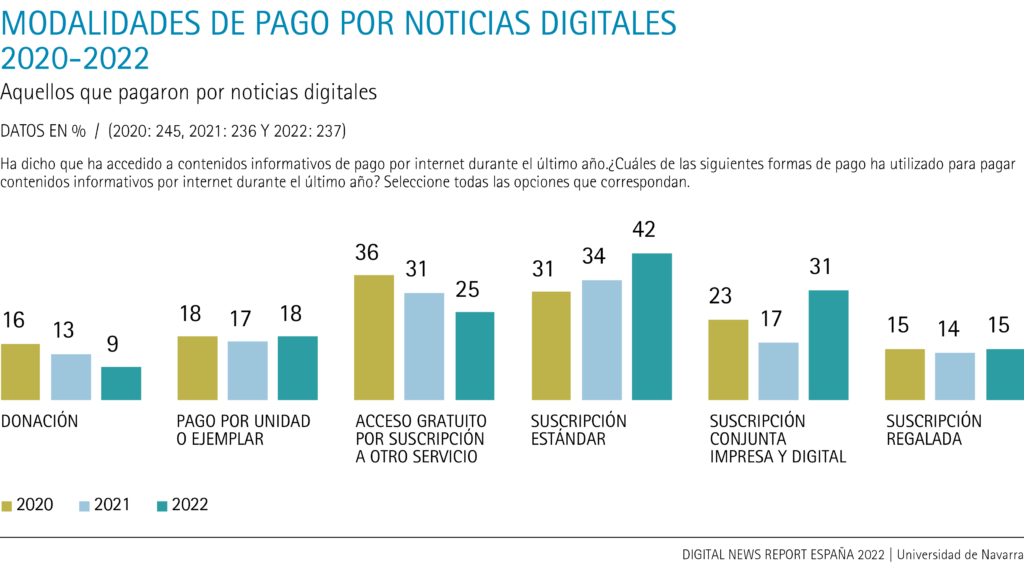
In addition to the increase in subscriptions, the 2022 data offers another very significant change, related to the average number of news services to which paying users subscribe. If until last year the majority reported paying for only one news service, this year almost half (49%) report paying for two or more digital news subscriptions. These data have two important readings. First, the concentration of payment around the market leaders is reduced -the first one no longer takes it all-. And secondly, paying for news is beginning to become a normalized habit, at least among the most loyal and interested readers.
As regards the Degree concentration of payment in the Spanish news market, data shows that the journalistic brand continues to play an important role in the decision to pay, and that the main national and regional newspapers are the ones that obtain the best subscription figures. However, the main digital natives -especially Eldiario.es- have found their niche in an extremely competitive environment. Compared to other countries, subscriptions to Spanish local media is relatively leave (5%) and therefore, with a large margin of growth that brings them closer to the figures of Norway (39%), Sweden (35%) or the United States (27%). Curiously, subscriptions to foreign media are higher in Spain (8%) than in other similar countries such as France (6%), Italy (6%) or Portugal (4%).
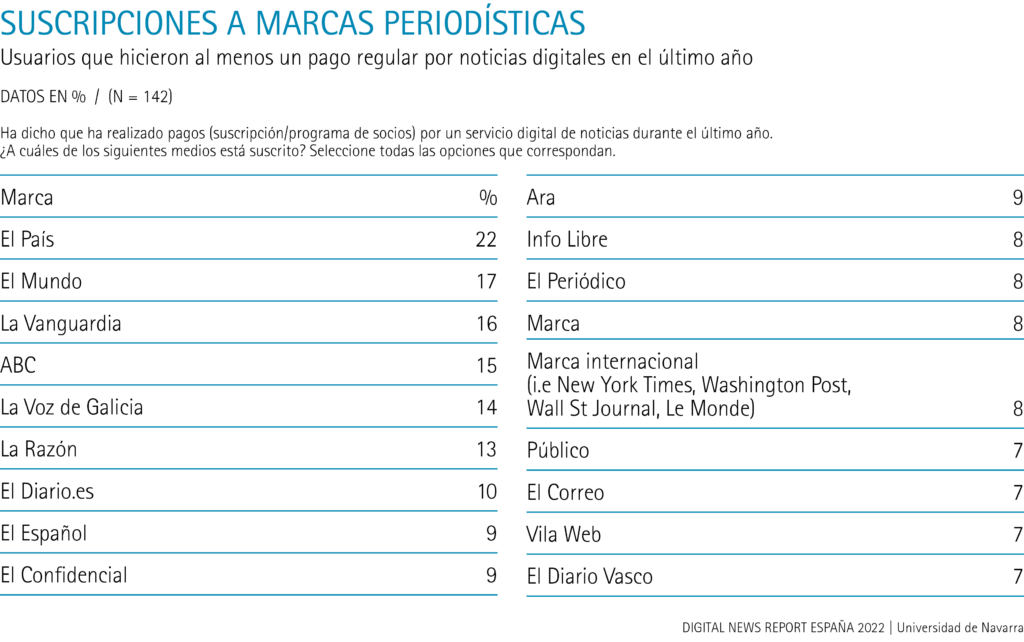
Finally, and with respect to the growing transition from a free model to a subscription-based among the most loyal users, it is interesting to note that of all the factors that influence payment for news, it is interest in the information and not trust that has the greatest impact on the purchase decision. As can be seen in the following table, those who report being very interested in news are more likely to pay for it, whether they are very trusting (14%) or distrustful (15%).

From a sociodemographic point of view, payment for digital news is concentrated and growing in the younger age groups (17% of those under 35 years of age report paying, compared to 10% of those over that age), among higher incomes (18%) and higher level educational (15%).
